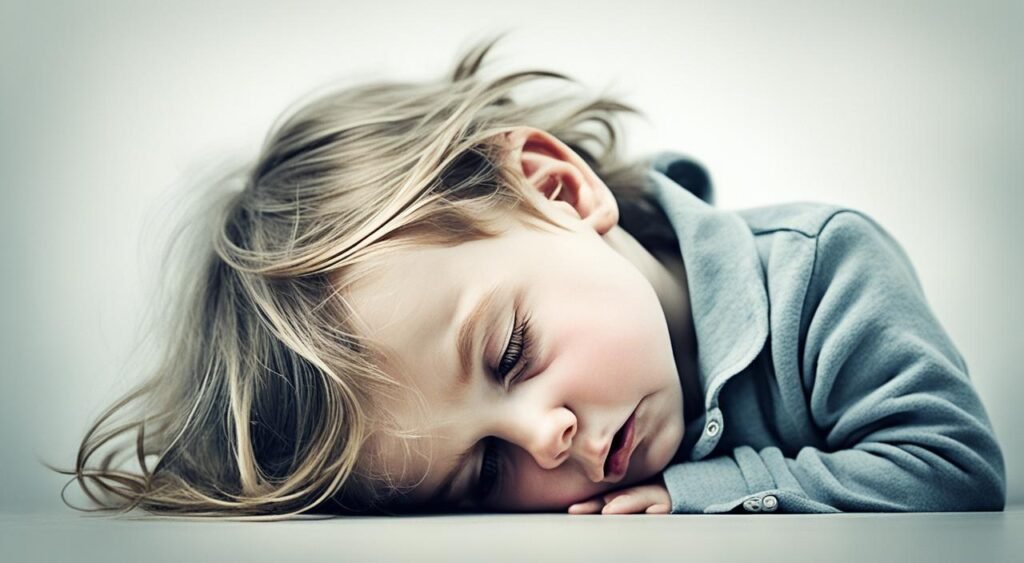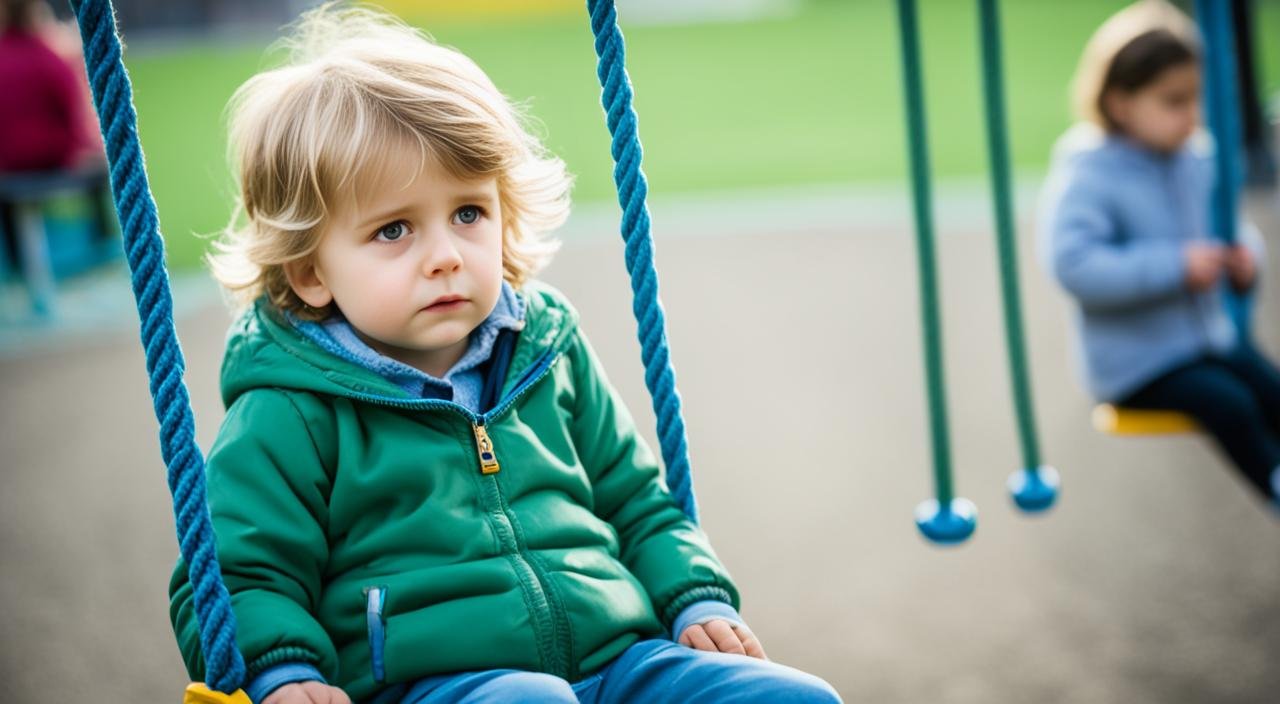Parents can often feel overwhelmed when their child behavior problems seem uncontrollable. Most kids will have temper tantrums and break rules occasionally. These behaviors can show their needs are not met or they’re under stress. But, they could also be a sign of a deeper issue, like a behavioral disorder or emotional problem.
Key Takeaways
- Behavioral issues can be a sign of unmet needs or stress in a child’s life.
- Frequent and severe temper tantrums past age 5 may indicate a behavioral issue.
- Difficulty with interpersonal relationships can be a sign of out-of-control behavior.
- Poor impulse control can lead to dangerous actions in a dysfunctional child.
- Serious behavioral problems like rule-breaking, bullying, and self-harm may indicate a disorder.
Understanding Dysfunctional Child Behavior
Parenting challenges can come up when a child shows troubling behaviors. These can disrupt the family and the relationship with the parents. The first source mentions that temper tantrums are normal for young kids and get less over time. But, if severe outbursts continue past age five, it could point to a behavioral issue. Such issues might include crying, yelling, hitting, and breath-holding.
Difficulty with Interpersonal Relationships
Another sign from the source is out-of-control behavior related to struggling in relationships. Such issues can be seen in arguments, blaming, and difficulties making or keeping friends. This can lead to a child feeling alone and hurt their self-esteem.
Poor Impulse Control
The first source mentioned that children with out-of-control behavior find it hard to control their impulses. They act first without thinking about possible results. This can lead to behaviors like seeking attention, fighting, being impatient, and not considering consequences.
Serious Behavioral Problems
However, sometimes, this out-of-control behavior can take a more serious turn. This can mean breaking important rules or even harming themselves or others. Such actions could point to disorders like ODD or CD, needing urgent attention to maintain safety.
What is a Dysfunctional Child?

Understanding a dysfunctional childhood helps see the struggles of emotionally disturbed children and the parent-child relationship issues they face. Important signs include over-independence, trust issues, anger problems, and trouble in close relationships.
Signs of a Dysfunctional Childhood
People who had a hard childhood might act overly independent. They might come from homes where yelling was common or had trouble trusting. They often feel unloved, expect bad things, and struggle in relationships. Anger and self-sabotage are also common.
Impact of Adverse Childhood Experiences (ACEs)
The CDC-Kaiser Permanente adverse childhood experiences (ACE) study looked into this. Their findings show bad childhood experiences can affect people long-term. The more traumatic events you had, the more likely you are to face mental health or physical issues.
Recognizing Dysfunction in Your Family
The third source guides us on spotting a dysfunctional family. Signs include secrecy, poor talking, and a fear of speaking out. There might be strict rules, isolation, abuse, and neglect. Emotions might be held back, and love might be conditional or even withdrawn at times.
Types of Dysfunctional Families
There are several main types of dysfunctional families. Each has its own issues and traits. Knowing about these can help us understand what children from these families face.
The Pathological Family
In a pathological family, parents may have substance abuse issues or mental health problems. As a result, they are not able to meet their children’s needs. Kids often have to take care of themselves and may even look after the adults.
The Dominant-Submissive Family
In the dominant-submissive family, one parent holds all the power. They do not consider what others want or feel. This parent expects a lot from their children but doesn’t show much love. Punishments for mistakes are harsh; there are no compromises in this home.
The Chronic Conflict Family
A chronically conflicted family is always arguing. These arguments are harmful, leading to bitterness and anger. They have trouble communicating and solving problems, resulting in ongoing conflict. This environment is very stressful for everyone involved.
The Chaotic Family
In a chaotic family, things are all over the place. Parents might be absent, busy, or abusive. There are no clear rules or expectations. Children do not get the care and protection they need because of this unpredictable environment.
The Emotionally Detached Family
In an emotionally detached family, children lack affection and warmth from their parents. There is no talk about feelings. Parents can be cold and unavailable emotionally. Without emotional support, kids may feel unloved and have low self-esteem.
Identifying and Addressing Dysfunctional Roles
Dysfunction often starts in families when members take on certain roles. These roles keep the family problems going. A study shows different roles and how they affect family life.
The Enabler
The enabler, or caretaker, works hard to keep the family running, even when there are problems. They shield family members in trouble and hide bad behavior. They enable the dysfunctional person to act poorly without facing the consequences.
The Scapegoat
The scapegoat is the labeled “troublemaker” of the family. They are blamed for family issues while others are seen as “good.” This mistreatment can make the scapegoat feel alienated, like they don’t fit in.
The Lost Child
The lost child is often quiet and spends time alone to avoid family strife. They may do this to keep out of trouble. But, by fading into the background, their needs are overlooked.
The Mascot
The mascot uses humor to distract from family problems. They try to lighten the mood and keep everyone happy. This comic relief can hide the seriousness of the family’s issues.
The Hero
The hero tries hard to keep up the family facade of normality. They might be the only one who sees the family’s real issues. However, their efforts to bring about change are often ignored by the rest.
The Mastermind
The mastermind takes advantage of family dysfunction. They could use manipulation to get what they want. This behavior further fuels the family’s dysfunctions.
Conclusion
A dysfunctional child shows troubling signs such as severe tantrums and poor control over actions. They often struggle with making and keeping friends. Sometimes, these kids might even harm themselves or others.
It’s key to understand that child behavior problems stem from various issues. These include trauma, mental health conditions, or family dysfunction. By recognizing these issues, parents and professionals can take steps to help. This way, the child can learn to cope in a healthier way.
By offering child counseling and improving parent-child relationships, families can heal. They can work together to help the child lead a better life. This support teaches the child to handle situations and build positive interactions.
FAQ
What is a dysfunctional child?
A dysfunctional child shows troubling behaviors due to different issues. These may come from trauma, mental health problems, or family troubles. You might see them having a lot of tantrums, finding it hard to be with others, or hurting themselves.
What are the signs of a dysfunctional child?
Signs of a dysfunctional child can be seen in their actions. They may have a lot of tantrums, find it hard to get along with people, or have trouble controlling themselves. They might even break rules, bully others, or hurt themselves.
How does childhood trauma and family dysfunction impact a child?
Negative things in a child’s early life, like abuse or growing in a troubled family, can leave deep marks. These experiences can lead to depression, anxiety, and other problems when they grow up. The more bad experiences a child has early on, the harder it may be for them later in life.
What are the different types of dysfunctional families?
Experts have named several kinds of troubled families. These include families where there are harmful behaviors, those where there’s a clear power imbalance, and those where there’s constant fighting. There are also those that are just very disorganized. Each kind can affect kids in different, but not good, ways.
How do dysfunctional family roles contribute to the cycle of dysfunction?
In a family that’s not working right, different members often take up specific roles. These roles can include one person seeming to take the blame for everything, another always trying hard to be perfect, or someone always causing trouble. These roles can keep a family’s issues going, making it hard for them to change.





